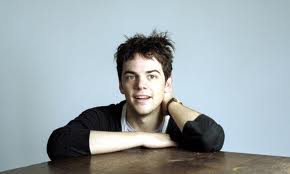 David Lang’s Sweet Air (1999) is like a musical mosaic. Small fragments, combined in interesting ways, sparkle and shimmer, playing tricks on the ear. The piece suggests an altered sense of reality and time. Here is Lang’s description:
David Lang’s Sweet Air (1999) is like a musical mosaic. Small fragments, combined in interesting ways, sparkle and shimmer, playing tricks on the ear. The piece suggests an altered sense of reality and time. Here is Lang’s description:
During a trip to the dentist my oldest son Isaac was given laughing gas. The dentist called it sweet air, a gentle name to take the fear out of having a cavity filled. It worked. My son experienced something—a drug—so comforting that it made him ignore all signs of unpleasantness. This seemed somehow musical to me. One of music’s traditional roles has always been to soothe the uneasy. I must say I have never been that interested in exploring this role. It is much easier to comfort the listener than to show why the listener might need to be comforted. My piece ”sweet air” tries to show a little bit of both. In ”sweet air,” simple, gentle musical fragments float by, leaving a faint haze of dissonance in their wake.
Pay attention to the way the parts fit together. How is the music flowing and developing? Does the atmosphere of the piece suggest something soothing, troubling, or a mix of both?
https://www.youtube.com/watch?v=oKmkTNhwHF0
Sweet Air is part of a collection of related pieces called Child. Learn more about David Lang (b. 1957) and his music here.

